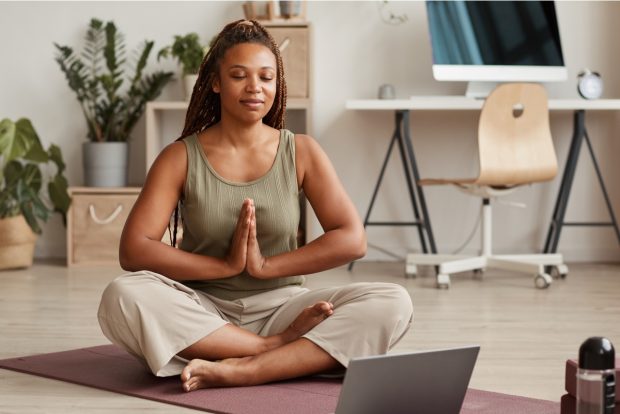The Essence of Mindfulness and Relaxation
Finding calm and clarity in a busy world often feels unattainable, yet mindfulness and relaxation provide the tools to achieve this balance. At its core, mindfulness involves being fully present, while relaxation allows the mind and body to recover from stress. Together, these practices unite as a powerful combination to ease the mind, fostering a deeper connection to ourselves and the world around us. This blog will explore the habits, science, and environments that cultivate a calmer mind, giving you actionable steps to start your mindful, relaxed lifestyle today.
Understanding the Interplay of Mindfulness and Relaxation
Mindfulness and relaxation are interconnected yet distinct practices. Mindfulness requires awareness and acceptance of the present moment without judgment—whether you’re focusing on your breath, sensations, or environment. Relaxation, on the other hand, is about physically and emotionally releasing tension. When combined, mindfulness sharpens your mental awareness while relaxation sets the stage for this clarity to flourish by reducing stress hormones and calming the nervous system. Understanding this harmony is crucial for creating daily habits that restore balance.
Cultivating Mindfulness in Daily Life: Practical Techniques
Mindfulness doesn’t require hours of meditation on a mountain—it’s about finding opportunities for presence in everyday moments. Practices like mindful breathing, scanning your body for sensations, or simply being fully present during a cup of tea can bring mindfulness into your day. Whether it’s five minutes in the morning or while commuting to work, cultivating mindfulness is as simple as focusing on what’s in front of you. These small moments build over time, leaving your mind more anchored and less distracted.
Integrating Relaxation Practices into Your Daily Routine
Relaxation isn’t just an indulgence; it’s an essential reset for your energy and mental clarity. Scheduling short relaxation sessions throughout your day can dramatically lower stress levels. Techniques like yoga, progressive muscle relaxation, or even walking in nature give your body a break from tension. This integration is especially potent when paired with mindfulness, making your breaks not only restorative but also enriching.
The Science Behind Mindfulness and Relaxation: Benefits for Mental Health
Mindfulness and relaxation aren’t just feel-good practices—they have tangible mental health benefits. Studies show that mindfulness reduces symptoms of anxiety and depression, while relaxation suppresses cortisol, the stress chemical. Together, they enhance brain plasticity, improving your ability to regulate emotions and adapt to challenges. For those experiencing burnout, these practices can act as a buffer for long-term mental well-being, backed by scientific research.
Chart: Comparing Different Mindfulness and Relaxation Techniques
|
Technique |
Focus Area |
Suitable For |
Time Required |
|---|---|---|---|
|
Mindful Breathing |
Mental clarity |
Beginners |
3-5 minutes daily |
|
Progressive Muscle Relaxation |
Physical tension release |
People with high physical stress |
10-15 minutes |
|
Meditation |
Deep focus and calm |
Those seeking thorough immersion |
15-30+ minutes |
|
Yoga |
Mind-body connection |
Active relaxation enthusiasts |
20+ minutes |
|
Nature Walks |
Visual and sensory grounding |
Outdoor lovers |
15-30 minutes |
Creating a Mindful Environment: Designing Your Space for Calmness
Your physical surroundings influence your mental state. A cluttered, chaotic space can invite anxiety, while a mindful space creates calmness. Start with simple adjustments—minimize clutter, add calming colors like blue or pastel tones, incorporate natural light, and place plants or natural textures to connect with nature. Create a designated mindfulness or relaxation corner with a cushion, aromatic candles, or a soft blanket. Designing mindful environments helps reinforce habits of serenity.
Mindful Eating and Its Role in Relaxation
Food is more than nourishment—it’s an experience. Mindful eating is about savoring each bite, noticing flavors, and understanding your body’s hunger signals. It encourages you to step away from rushed meals or emotional snacking. By slowing down while eating, you activate your body’s relaxation response, improving digestion and creating an intimate moment of gratitude.
The Impact of Technology on Mindfulness and How to Counteract It
While technology connects us globally, it often disconnects us from our present moment. Constant notifications and screen time overstimulate our brains, leaving little bandwidth for mindfulness. Counteract this by setting boundaries—designate tech-free times like during meals or before bedtime. Use apps designed to reduce phone dependency or prompt mindfulness practices instead. Balance is key; technology can support mindfulness if used wisely.
Overcoming Challenges in Maintaining a Mindful Practice
Maintaining mindfulness and relaxation habits can be challenging in a world that rarely slows down. Occasional distractions or skipped sessions are normal but don’t have to derail your progress. Focus on consistency rather than perfection. Try using reminders, setting small goals, or pairing mindfulness activities with enjoyable rituals, like a cup of coffee or evening journaling. Persistence, even in imperfect moments, shapes long-term habits.
Sustaining Long-Term Mindfulness and Relaxation Habits
Mindfulness and relaxation shouldn’t feel like tasks to check off but rather essential habits woven into your daily life. Celebrate small wins, reflect on the positive changes these practices bring, and evolve your approach as your needs change. Stay curious and open to exploring new techniques or revisiting older ones. Long-term calmness grows through commitment, but its fruits—a healthier, happier mind and body—are worth the effort.
Embracing a Calmer, More Mindful Life
Mindfulness and relaxation aren’t quick fixes; they are lifelong journeys. By stepping into the present moment, soothing your mind, and caring for your mental space, you create a more peaceful, balanced life. Begin with a single breath, a mindful bite, or a moment of stillness—they each have the power to transform your day. No matter where you start, every step brings you closer to the calm and connection you deserve. Take that first step today and experience the profound difference mindfulness can make.




